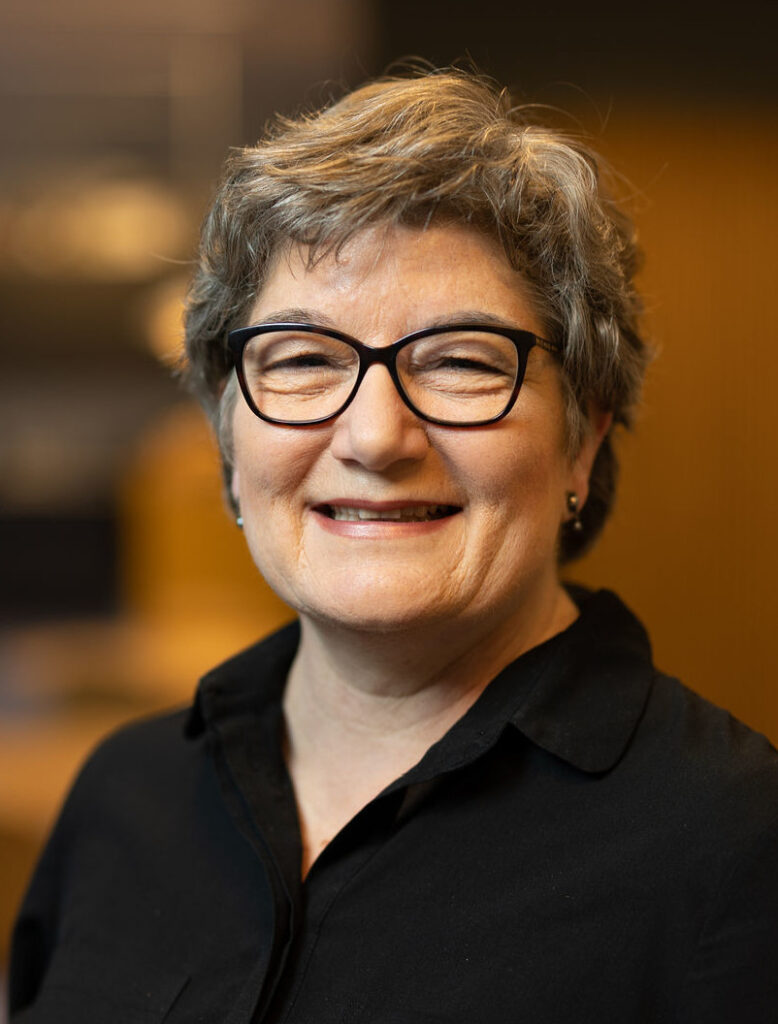登壇者 Guest:

モニラ・アルカディリ
モニラ・アル・カディリは、セネガルのダカール生まれで、日本で教育を受けたクウェート人アーティスト。2010年に東京藝術大学大学院美術研究科博士後期課程を修了し、博士号(美術)を取得。彫刻、インスタレーション、映像、パフォーマンスなど、多岐にわたる彼女の作品は、主にペルシア湾岸地域の文化史の研究に基づいている。彼女の石油文化に関する解釈は、SF、自伝、伝統的慣習、ポップカルチャーから着想を得た思索的なシナリオを通して表現され、不気味で破壊的な作品を生み出している。現在はベルリンに在住し、活動している。
Monira Al Qadiri
Monira Al Qadiri is a Kuwaiti artist born in Dakar, Senegal, and educated in Japan. In 2010, she earned a PhD in inter-media art from Tokyo University of the Arts. Her multifaceted practice spans sculpture, installation, film, and performance, with a primary focus on the cultural histories of the Persian Gulf region. Al Qadiri’s exploration of petroleum-cultures often manifests as speculative scenarios inspired by science fiction, autobiography, traditional practices, and pop culture, resulting in uncanny and subversive works. She currently lives and works in Berlin.
クェート出身で、現在はベルリンを拠点に世界的に活躍するアーティスト、モニラ・アルカディリ。16歳で単身日本に留学し、武蔵野美術大学で学士号、多摩美術大学で修士号を取得したのち、東京藝術大学において「悲しみの美意識」という論文と制作により博士号を取得しています。
彼女の表現は、真珠や石油をモチーフとした大規模な彫刻やインスタレーションから、ジェンダーを攪拌するような映像作品やパフォーマンスまで実に多様ですが、その根幹には、生まれ育った中東アラブ世界、ペルシャ湾岸地域の歴史や社会に対する批評的な眼差しや、幼い頃から心酔してきた日本のアニメ文化などの影響が読み取れます。それらは、聖と俗、男と女、死者と生者、善と悪などの境界線を攪拌し、乗り越えていく独特のポエジーとユーモアに満ち溢れています。
近年では、ハウス・デア・クンスト(ミュンヘン、2020)、BOZAR(ブリュッセル、2024)、など世界有数の美術館での個展を開催し、またシャルジャ・ビエンナーレ(2023)、シドニービエンナーレ(2024)などの主要な国際展で多数の新作を発表。日本では、あいちトリエンナーレ2019での『髭の幻』パフォーマンス上演、シアターコモンズ’21でのロボット人形劇『吊り狂い』(ラエド・ヤシンとの共作)、森美術館『わたしたちのエコロジー』展(2023)などで作品を発表、注目を集めています。
本講演会は、モニラ・アルカディリ自身が、日本語にて自らの創作を語る貴重な機会となります。彫刻、インスタレーション、映像、パフォーマンスなど、多岐にわたる彼女の作品に通底するナラティブとは何か。ペルシャ湾岸地域の文化史、とりわけ石油文化に関する考察が、SF、自伝、伝統的慣習、ポップカルチャーなどを経由し、どのようなナラティブを構築し、彼女の豊かな作品世界を支えているのでしょうか。後半は、学生からの質問も受けつけ、作品とナラティブの関係について議論を深める機会とします。
本学で学ぶ学生の皆さんにとっても、自らの問いと表現を接続するヒントを得る機会となることを期待します。ぜひご参加ください。
Monira Al Qadiri is a Kuwaiti artist currently based in Berlin who studied in Japan from the age of 16. She received her BA from Musashino Art University, her MA from Tama Art University, and her PhD from Tokyo University of the Arts with a thesis entitled “The Aesthetics of Sadness.”
Her expression spans a diverse range of media, including large-scale sculptures and installations featuring motifs of pearls and oil, gender based video works, and performances. At the core of her work lies a critical examination of the history and society of the Arab world and the Persian Gulf region where she was raised, alongside influences from Japanese anime culture, which captivated her from childhood. Her works embody a unique blend of poetry and humor, transcending and blending boundaries between the sacred and the profane, male and female, the dead and the living, and good and evil.
In recent years, Al Qadiri has had solo exhibitions at leading museums worldwide, including Haus der Kunst (Munich, 2020) and BOZAR (Brussels, 2024). Her works have been showcased in major international exhibitions such as the Sharjah Biennale (2023) and the Sydney Biennale (2024). In Japan, her notable projects include the performance staging of “Phantom of the Beard” at the Aichi Triennale 2019, the robotic performance “Hanging Madness” (co-created with Raed Yasin) at Theater Commons ’21, and the group exhibition “Our Ecology” at the Mori Art Museum (2023).
This lecture offers a rare opportunity to hear Monira Al Qadiri discuss her creations in Japanese. What narratives underpin her diverse works in sculpture, installation, video, and performance? How do the cultural histories of the Persian Gulf region—particularly its petroleum culture—combine with science fiction, autobiography, traditional customs, and pop culture to construct the rich, multifaceted narratives of her art? The second half of the session will include a Q&A, offering students the chance to deepen their understanding of the relationship between her works and their narratives.
We hope this event inspires students at our university, providing valuable insights into connecting their own questions with their personal creative expression. We look forward to your participation.

アーティスト・バイオグラフィー Artist Biography:
主な個展に、「The Archaeology of Beasts」(BOZARブリュッセル、2024年)、「Benzene Float」(Halle Verriere、2024年)、「Haunted Water」(UCCA Dune、中国2023年)、「Mutant Passages」(Kunsthaus Bregenz、 2023年);「Holy Quarter」(ビルバオ・グッゲンハイム美術館、2022年);「Refined Vision」(ブラファー美術館、ヒューストン、2022年);「Holy Quarter」(ハウス・デア・クンスト、ミュンヘン、2020年);「Empire Dye」(ゲッティンゲン美術協会 2019年)、「The Craft」(ガスワークス、ロンドン、2017年)、「Attempts to Read the World Differently」(ストローム・デン・ハーグ、ハーグ、2017年)、「Muhawwil」(サルタン・ギャラリー、クウェート、2014年)。
主なグループ展に、「Poetics of Power」Kunsthaus Graz(グラーツ、2024年)、Desert X Al Ula(アル・ウーラ、2024年)、第24回シドニー・ビエンナーレ(シドニー、2023-24年)、第8回ボラス・ビエンナーレ(スウェーデン、2024年)、シャルジャ・ビエンナーレ15 5(シャルジャ、2023年)、「The Milk of Dreams」第59回ヴェネツィア・ビエンナーレ(ベネチア、2022年)、第15回小彫刻トリエンナーレ(フェルバッハ、2022年)、アジア・アート・ビエンナーレ(台湾、2021年)、Dubai Expo 2020(2021年)、「Our World is Burning」(パレ・ド・トーキョー、パリ、2020年)、「Theater of Operations: Gulf Wars」(MoMA PS1、ニューヨーク、2019-20年)、アジア・パシフィック・トリエンナーレ(ブリスベン、2018年)、ルレア・ビエンナーレ(スウェーデン、2018年)、アテネ・ビエンナーレ(アテネ、2018年)。
Monira’s solo exhibitions include “The Archaeology of Beasts” (BOZAR Brussels, 2024), “Benzene Float” (Halle Verriere, France, 2024), “Haunted Water” (UCCA Dune, China, 2023), “Mutant Passages” (Kunsthaus Bregenz, 2023), “Holy Quarter” (Guggenheim Museum Bilbao, 2022; Haus der Kunst, Munich, 2020), “Refined Vision” (Blaffer Art Museum, Houston, 2022), “Empire Dye” (Kunstverein Göttingen, 2019), “The Craft” (Gasworks, London, 2017), “Attempts to Read the World Differently” (Stroom Den Haag, The Hague, 2017), and “Muhawwil” (Sultan Gallery, Kuwait, 2014).
Select group exhibitions include “Poetics of Power” (Kunsthaus Graz, 2024), Desert X Al Ula (Al Ula, 2024), the 24th Biennale of Sydney (2023–24), 8th Borås Biennial (Sweden, 2024), the Sharjah Biennale 15 (2023), “The Milk of Dreams” 59th Venice Biennale (Venice, 2022), 15th Triennial of Small Sculpture (Fellbach, 2022), Asia Art Biennial (Taiwan, 2021), Dubai Expo 2020 (2021), “Our World is Burning” (Palais de Tokyo, Paris, 2020), “Theater of Operations: The Gulf Wars” (MoMA PS1, New York, 2019–20), Asia Pacific Triennial (Brisbane, 2018), Luleå Biennial (Sweden, 2018), and Athens Biennial (Athens, 2018).
日時 Date & Time:
2024年12月12日(木)18:30-20:30
12 December 2024, Thursday 18:30-20:30
会場 Venue:
東京藝術大学上野キャンパス 美術学部中央棟第一講義室(以下の地図の7番)
Lecture Room 1, Central Building, Faculty of Fine Arts, Ueno Campus, Tokyo University of the Arts (No. 7 on the map below) *
https://www.geidai.ac.jp/access/ueno
使用言語:日本語と英語
Language: Japanese and English
対象 Eligibility:
本学の学生・教職員、学外一般 (先着順・定員150名)
*GAP修士1年・2年の学生でSPSソーシャル・プラクティス・セミナーを履修登録している学生は、12月16日(月)のワークショップの課題出しを兼ねた授業なので、必ず受講すること。
TUA students, faculty, staff, and the general public (first-come-first-served basis, capacity 150 people) *GAP first and second year master’s students who are registered for the SPS Social Practices Seminar are required to attend this class as it will also serve as an assignment for the workshop on December 16 (Monday).
参加無料・要予約(先着順)Admission:
Admission is free, reservations are required (on a first-come, first-served basis)
https://docs.google.com/forms/d/e/1FAIpQLSe9jRdMChlH_qj8O3cw4tBASABwaBpYMSPYLuWueIBTm0UxQw/viewform?usp=sharing
企画・司会 Planning and moderator::
相馬千秋(アートプロデューサー、東京藝術大学大学院美術研究科グローバルアートプラクティス専攻准教授)
Chiaki Soma (Art Producer, Associate Professor of Global Art Practice, Graduate School of Fine Arts, Tokyo University of the Arts)
主催 Credit:
東京藝術大学大学院美術研究科グローバルアートプラクティス専攻(GAP)
Global Art Practice (GAP), Tokyo University of the Arts
問い合わせ先 Contact:
美術研究科 グローバルアートプラクティス専攻 メール:gapstaffs@ml.geidai.ac.jp
Graduate School of Art, Department of Global Art Practice Email: gapstaffs@ml.geidai.ac.jp













